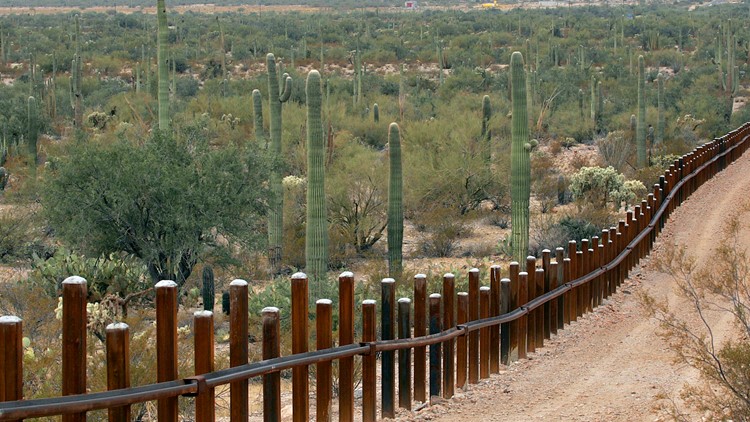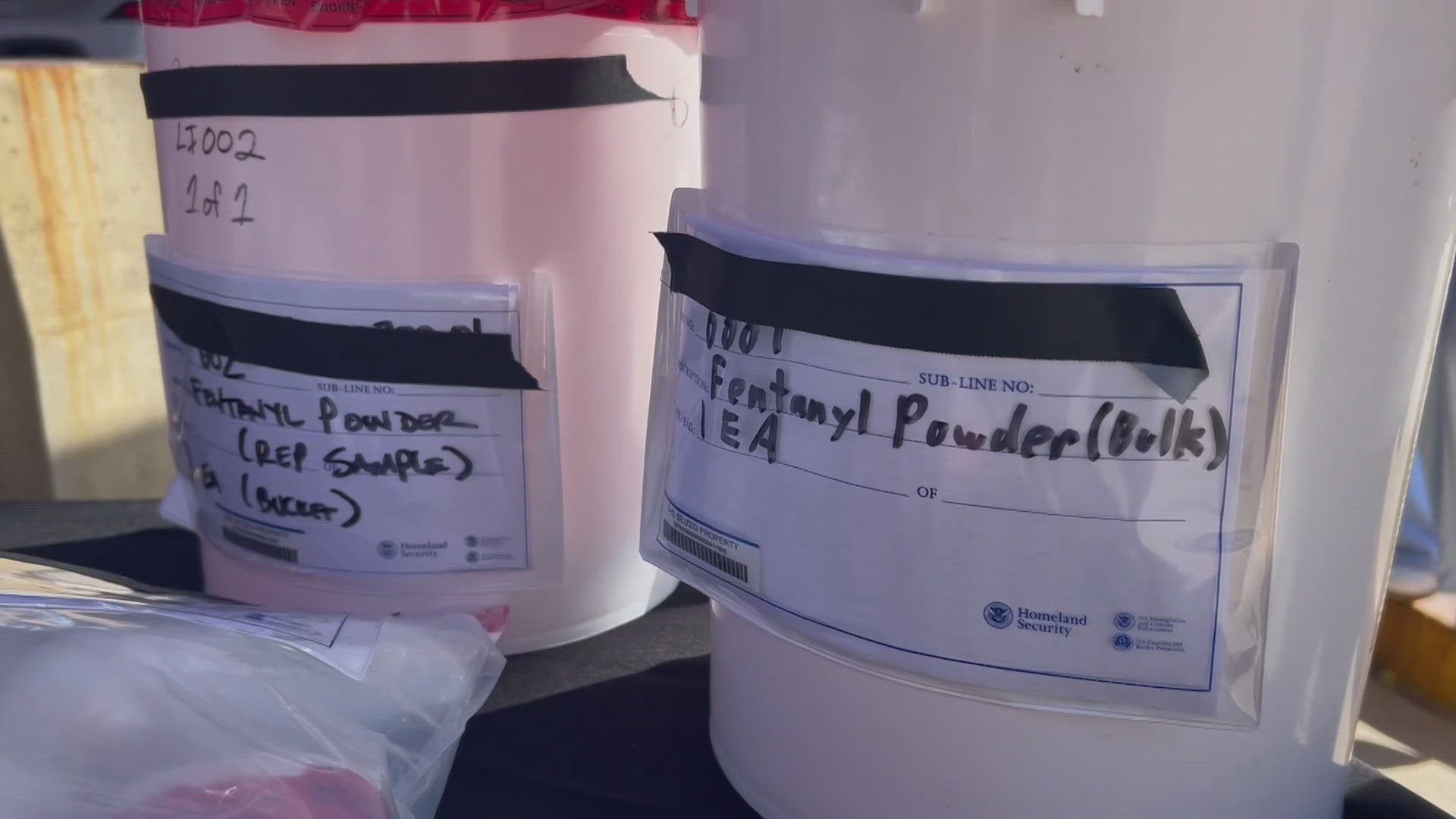YUMA, Ariz. — The Biden administration on Thursday authorized the completion of the Trump-funded U.S.-Mexico border wall in an open area of southern Arizona near Yuma, where four wide gaps make it among the busiest corridors for illegal crossings.
The Department of Homeland Security said in a statement that the work to complete the project near the Morelos Dam will better protect migrants who can get hurt slipping down a slope or drown walking through a low section of the Colorado River.
The area is the third busiest crossing for migrants who can easily walk across the river to surrender to border officials.
Completion of the wall was at the top of former President Donald Trump's agenda, and border security remains a potent issue for candidates of both parties going into this year's primary elections. President Joe Biden halted new wall construction after he took office, but he has since made closing the gaps just south of Yuma a priority.
Democratic U.S. Sen. Mark Kelly of Arizona, who is seeking his party nomination's next week to defend the seat in November, has pressed the Biden administration to close the gaps, calling them a challenge for officials trying to secure the border.
But Arizona environmentalist Myles Traphagen, who has been mapping ecological damage left by border wall construction under former President Donald Trump, said that closing the gaps won’t be much of a deterrent.
Traphagen said the Yuma area has “become the new Ellis Island for Arizona, with people arriving there from countries as disparate as Ethiopia, Cuba, Russia, Ukraine, India, Colombia and Nicaragua.
“People have traveled half way around the globe on planes, trains and automobiles,” he said, “so to expect that closing four small gaps is going to make them turn around and book a return flight on Air Ethiopia is sheer fallacy.”
The statement announcing Homeland Security Alejandro N. Mayorkas had approved the work to be done by Customs and Border Protection emphasized the area’s “safety and life hazard risks for migrants attempting to cross into the United States.”
A 5-year-old migrant girl crossing the water in a group drowned near the dam June 6 when she became separated from her mother. The child’s body was later found in the river.
U.S. officials didn't release the girl's identity or nationality. But Jamaican newspapers have said she was believed to be from that country.
It was unclear when construction would begin. The statement said officials will move “as expeditiously as possible, while still maintaining environmental stewardship” by consulting affected parties.
The gaps are inside an area for a barrier project previously funded by the Defense Department and will be paid for by Homeland Security appropriations for fiscal year 2021.
Environmentalists like Traphagen, meanwhile, have called for removal of other sections of barrier they say hurt local wildlife like bobcats, mountain lions, javelinas and mule deer.
The Tucson-based Wildlands Network this week released a new report on sites along the U.S.-Mexico border that it considers in the greatest need of environmental restoration.
Traphagen, the group's borderlands program coordinator, traveled the international boundary across New Mexico, Arizona and California this and last year to identify damaged wildlife corridors and other environmental harm.
The group calls for native foliage to be replanted in areas that were stripped bare during wall construction, and widening spaces between steel borders, now just 4 inches (10 cm) apart, to allow more wildlife to pass through.
It also calls for the removal of 180 miles (290 km) of razor wire that were installed along pedestrian bollard fencing in all border states in 2019 and 2020 both as an eyesore and a danger to the public and wild animals.
Up to Speed
Catch up on the latest news and stories on the 12News YouTube channel. Subscribe today.



